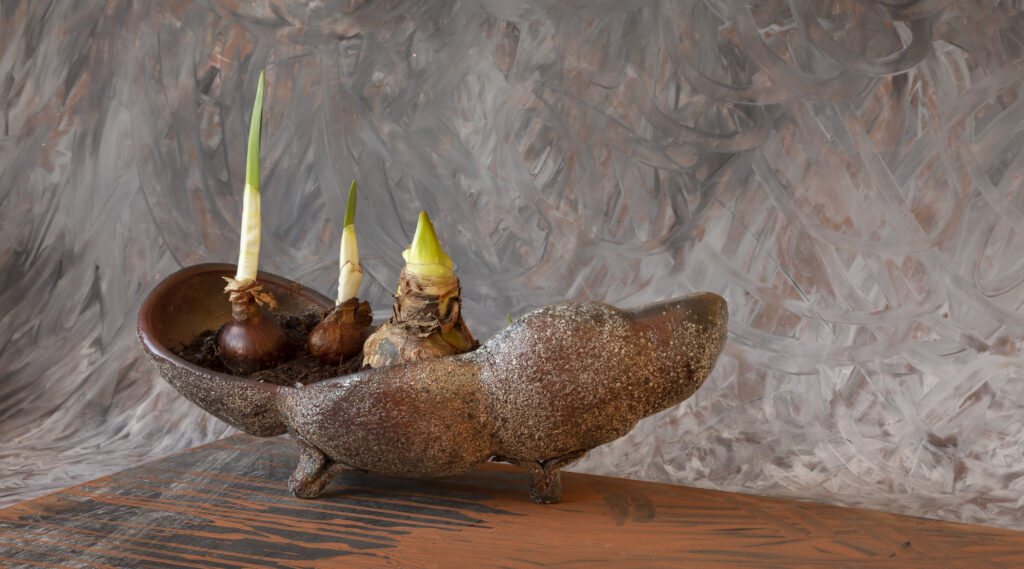It was one of those days when I wanted to capture how each blade of grass, dogwood bud, or grape vine tendril was emphasized by being encased in glistening ice. I carefully crunched through the icy snow while the puppy skittered and skated across the slick landscape. She monopolized my attention although I wanted to be lost in the intricacies of ice, reflections, drips, cracks and showering branches. At dusk I circled around our neighbor’s field. I like going up the steep hillside, able to look down on the pond and the swampy area upstream. Occasionally I can glimpse the studio. It reminds me of being on rooftops in the city.
Last night while talking to an old friend she reminded me how exciting it was to go up on my parents’ roof in Soho where we watched the sunset over water towers and the distant World Trade Center. My Italian friend–who I met when I was eleven when we lived uptown–remembered going up on that roof. He said it felt like being in some crazy movie including being taken afterwards by my older brothers to bicycle through Central Park in the snow; something he had never imagined doing! Sometimes we went to the roof via the fire escape, a skeletal black metal structure which was a way to escape up or to descend. When we went on trips my father would put one of his sculptures, a life-sized bumpy welded aluminum portrait of a woman holding a hammer, in front of the fire escape window with the shade down so that if a robber came down the fire escape they might be scared away. I had no fear of heights only excitement at the view.

from Ocean Vuong:
“During these aimless forays (in New York), I kept finding myself looking up—particularly on residential streets lined with anything from monolithic tenements to luxury brownstones. But I also saw, attached to nearly every building, a skeletal structure of architectural finesse equal, in my eyes, to any of the city’s glittering towers. Fire escapes. Not buildings exactly, but accessories. Iron rods fused into vessels of descent—and departure. Some were painted blue or yellow or green, but most were black. Black staircases. I could spend a whole hour sitting across the street from a six-floor walk-up studying the zig-zags that clung to a building filled with so many hidden lives. All that richness and drama sealed away in a fortress whose walls echoed with communication of elemental or exquisite language—and yet only the fire escape, a clinging extremity, inanimate and often rusting, spoke—in its hardened, exiled silence, with the most visible human honesty: We are capable of disaster. And we are scared.
…
I wonder what would happen if I were to bring the fire escape back inside. In fact, what would the fire escape look like if I were to wear it on my person, personality—in public? What would a fire escape sound like if it was imbedded into my daily language—and if I didn’t have to apologize for it? Could this be one reason we create art—one reason we make poems? To say the unsayable?
…
I approach it as if climbing the rungs of someone’s fire escape—whether I go up or down is between me, the reader, and the poet. And maybe nothing is burning at all. Maybe we are only up here for the view. But it’s up here that I wonder, at the risk of asking for too much, what if a fire escape can be made into a bridge?
…
And yet, in a time where the mainstream seems to continually question the power and validity of art, and especially of poetry, its need, its purpose, in a generation obsessed with appearances, of status updates and smiling selfies bathed (corrected?) in the golden light of filters, in which it has become more and more difficult for us to say aloud, to one another: I am hurt. I am scared. What happens now?, the poem, like the fire escape, as feeble and thin as it is, has become my most concentrated architecture of resistance. A place where I can be as honest as I need to—because the fire has already begun in my home, swallowing my most valuable possessions—and even my loved ones.”
— Ocean Vuong, from The Weight of Our Living: On Hope, Fire Escapes, and Visible Desperation, 2014, in The Rumpus
One reply on “#17 decembrance 2020”
This was a very thoughtful and thought provoking analogy, relating physical and emotional structures. Internal and external views are worth exploring and discovering!